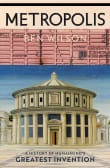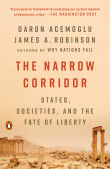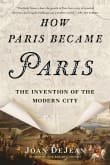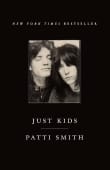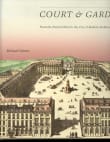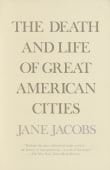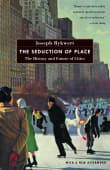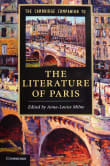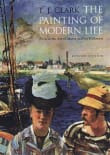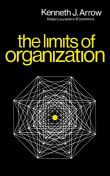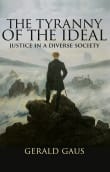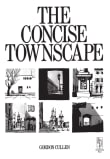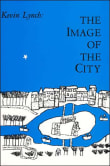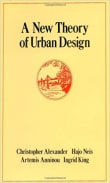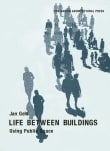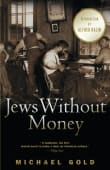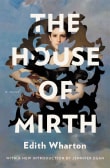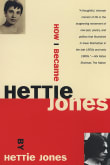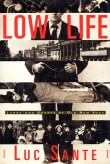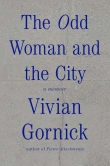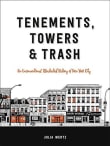The Death and Life of Great American Cities

Book description
In this classic text, Jane Jacobs set out to produce an attack on current city planning and rebuilding and to introduce new principles by which these should be governed. The result is one of the most stimulating books on cities ever written.
Throughout the post-war period, planners temperamentally unsympathetic to…
- Coming soon!
Why read it?
15 authors picked The Death and Life of Great American Cities as one of their favorite books. Why do they recommend it?

This eye-opening book was a revelation to me as a young student of architecture. It provided the keys to how cities really work. Its observations are as relevant and fresh today as they were when it was published in 1961. For me and many in my generation, it helped us to see and appreciate the organic, human-centered dynamics of neighborhoods, introducing the powerful concept of “organized complexity,” which made sense of things we saw but failed to understand.
I met Jane in Toronto in 1968 where she became a lifelong friend and mentor until her death in 2006. It remains…
From Ken's list on helped me understand cities.

This is the ultimate book for understanding how cities work. It clarified for me, as a young newspaper journalist, what I thought I was observing as I moved around New York City, covering various stories about communities fighting for the neighborhood or preserving a piece of their neighborhood scheduled for demolition. She explains how cities really work, not how the planners try to make them work.
From Roberta's list on authentic urbanism.

Jane Jacob’s groundbreaking, disruptive classic is first on many people’s lists. A journalist without a college degree and no formal training in urban planning, she blew up the once-established view that old-fashioned streets and buildings were done for, and that towers in the park surrounded by highways and parking lots were the way to go. Her portrait of her neighborhood in the West Village is deeply moving, and she almost single-handedly brought back these types of places as ideals.
However, she missed a lot. She didn’t understand the importance of infrastructure. She barely mentions the subways. She described her beloved…
From Alex's list on why cities and suburbs function the way they do.

Often hailed as the greatest book on cities ever, Jane Jacob’s critique of modernism and the rapid spreading out of the city through urban sprawl goes to the heart of what cities are all about. Her description of New York and other North American cities in terms of their diversity and cultural richness elevates the way we build our cities from the bottom up in the face of modernist planning that imposes an artificial order from the top down.
Her book is not only a critique of planning but a logic of how we should understand the complexity of cities…
From Michael's list on cities that are not what they seem.

The book that propelled the fight against modernist city planning–think urban renewal or interstate highways–is still a thrill to read 62 years after its publication.
Generating most of her insights by walking the city streets and living in Greenwich Village, Jacobs shows how dense neighborhoods with diverse land uses generate valuable "weak ties" while avoiding the suffocating conformity of small towns.
Jacobs did not just talk the talk; she walked the walk–getting arrested for protesting Robert Moses’ plan to slice a highway through lower Manhattan. Embraced by both libertarians and progressive new urbanists, Jacobs still generates controversy, but you can…
From Todd's list on why neighborhoods still matter.

This is the book that made me question what I had learned in urban economics as a Ph.D. student.
Cities are not neatly divided into homogeneous districts. Instead, cities are always changing and the most creative and productive areas tend to be diversified rather than specialized, since diversity begets creativity and innovation.
Jacobs argued that there are four design principles that cultivate dynamism: mixed primary uses, a high population density, a mixture of new and old buildings, and short blocks.
From David's list on understanding how societies develop.

If urbanists have a bible, Jane Jacobs’s first book, published in 1961, is it.
When I first read it, over a decade ago, I was radicalised. It made me think about how cities work in a way that I simply hadn’t before.
The book is a celebration of city life that was, even as she wrote, being destroyed by cars, expressway buildings, and “urban renewal,” all being done by blind bureaucrats in the name of progress.
From Daniel's list on urbanists who hate cars.

Sometimes improving the world can begin at your own doorstep. This book was written in the 1960s as city planners were razing huge swaths of urban centers and replacing them with banal, alienating towers that mostly destroyed the human scale of the lost neighborhoods. Jane Jacobs, by extensively walking urban neighborhoods, discerned what makes them vibrant. She coined the term “eyes on the street” and emphasized how street life and vibrant mixed uses enlivens a city. She forever changed the field of urban planning even though she had no formal urban planning credentials.
From Howard's list on inspiring people to improve the world.

You simply cannot understand the city without understanding the society that brings it to life. Over six decades ago, Jane Jacobs upended the professions that governed, built, and increasingly destroyed cities by describing how cities do not thrive on drawing boards, but only as lived and altered by actual citizens. Her work is at once a manifesto against the status quo, a vivid description of the microcosm of urban life, and a manual for how to improve cities. Jacobs really opened my eyes to cities as systems of ‘organized complexity,’ essentially constantly re-materializing reflections of the many daily wishes and…
From Conrad's list on the exciting life of cities.

The Death and Life of Great American Cities is a sacred text that documents how urban renewal turned complex interwoven neighborhoods into dyspeptic enclaves. For Jacobs, diversity was a city’s lifeblood and harmonizing a mix of people, uses, buildings, incomes, and transportation options defined urban planning. This maxim centered the effort to integrate what were previously deemed separate uses—housing, retail, bus service, and parking—to create livable urban cores designed to the elixir of the “sidewalk ballet.” The pedestrian-scaled neighborhood produced the informal face-to-face contacts that generates, Jacobs wrote, the "small change" that forms “social capital," defined by mutual concern,…
From R's list on urban design for human health and happiness.
Want books like The Death and Life of Great American Cities?
Our community of 12,000+ authors has personally recommended 100 books like The Death and Life of Great American Cities.
Browse books like The Death and Life of Great American Cities

